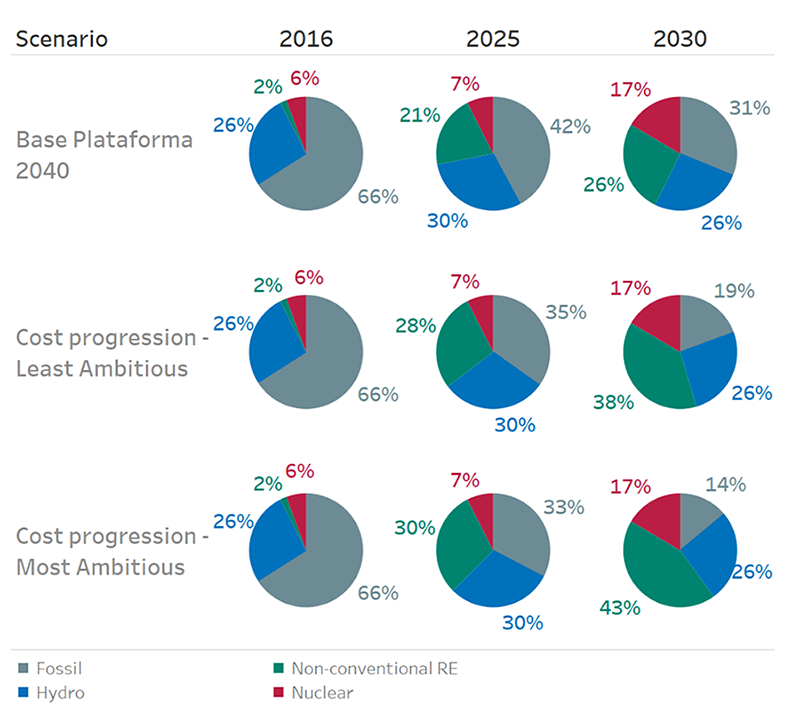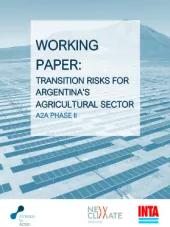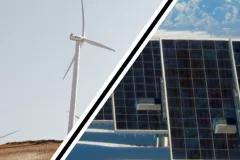Recent analyses developed by Fraunhofer ISI and NewClimate Institute show that faster and steeper than expected cost reductions for certain key mitigation technologies over the past five years can lead to an increased technology uptake and to a higher level of climate ambition, if the initially intended investment sum is maintained. The here presented technical assessment builds on the previously developed methodology to estimate the potential impact of investment cost reductions for renewable energy technologies (solar photovoltaics (PV) and onshore wind) on Argentina’s climate targets in the NDC.
In a subsequent analysis, interviews with Argentinian stakeholders were evaluated to investigate two questions: 1) whether and to what extent technology cost progressions are being considered in current planning and policy making processes in the climate and energy sector, and 2) where potential new entry points for a further consideration of these cost progressions could lie in the future. Both questions require a careful analysis of the actors and institutions in the field, as well as of the processes and tools that could potentially influence decision making in the climate and energy sector.
Main findings:
We assume that savings due to faster and steeper than expected technology investment cost reductions would be reinvested in the same technology area, which could lead to additional renewable technology uptake. As a result, the overall NDC target of limiting emissions to 369 MtCO2e in 2030 could be further reduced to 351-356 MtCO2e in the same year. This improvement is equivalent to a 6% to 8% increase in emissions reductions in comparison to reductions expected under the conditional NDC target. The current renewable energy targets set out in Law 27.191 are expected to bring Argentina’s renewable electricity share to 20% in 2025 and potentially to 25% in 2030. The consideration of cost progressions outlined in this analysis would render an update of the target to 28%-30% in 2025 and 38%-43% in 2030 possible. This would put Argentina’s power sector well within the range of what is considered to be aligned with the Paris Agreement.

The subsequent analysis shows that while a certain awareness for decreasing costs of renewable energy technologies exists among stakeholders and experts in the climate and energy sector, this knowledge has not yet infiltrated main planning and policy making processes which could use this information in order to raise the country’s climate ambition. In this sense, the current situation in Argentina may compromise not only the successful development of the renewable energy sector, but also the country’s potential to raise its climate ambition and to ensure overall socio-economic development. It is thus important to enhance transparent, effective and efficient planning in the energy sector that is based on robust tools and methods and results in the formulation of realistic and achievable targets. These targets are ideally embedded in a clear vision of the government towards the development of this sector and flanked by a policy and regulatory framework that shapes their implementation.






